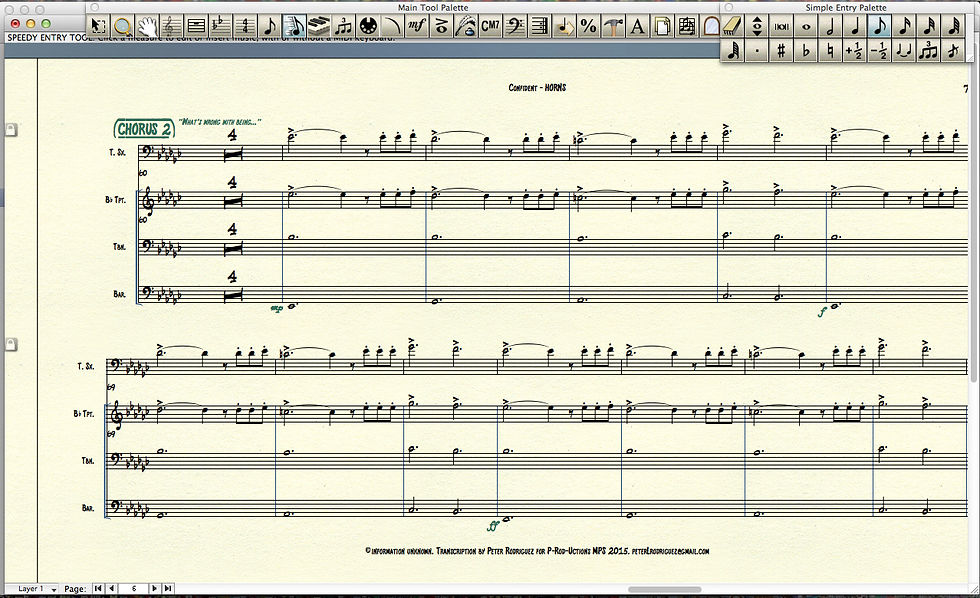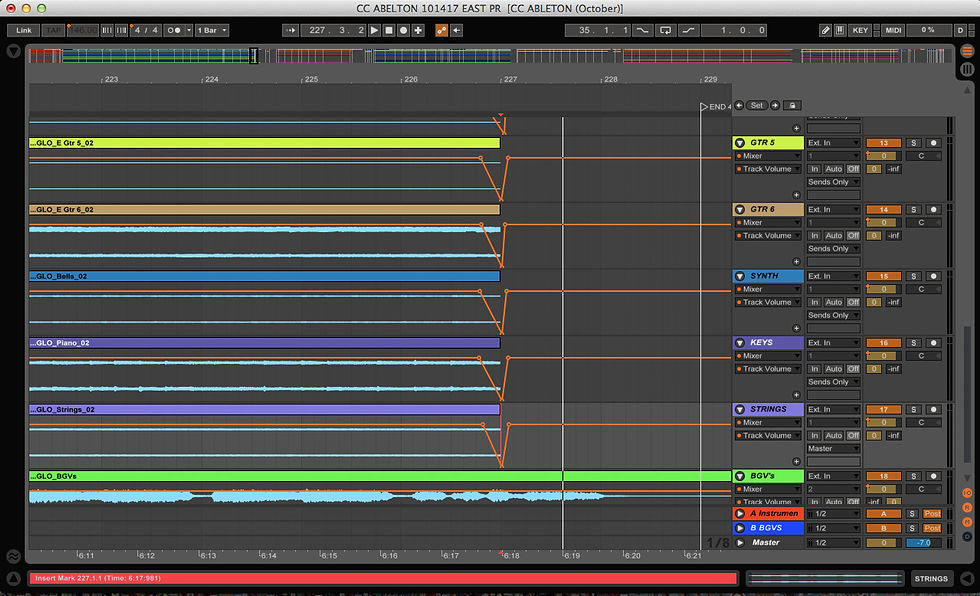I Love What I Do
- Peter R. Powers
- Oct 15, 2017
- 4 min read
First of all, a big thank you to everyone who is taking the time to read my blog. This blog is still very much a work in progress and changing as it goes along. I welcome any and all feedback, criticism, further expounding, and suggestions for topics that any of you may have. Initially, I thought this blog would only be about the technical aspects of music theory. My first entry was a pretty technical one about the naming of scales and note names within a scale related to accidentals. From time to time, I will also discuss other ideas within music as well. As I was working on some prep work this week, I thought I would share a thought on music preparation in general, so here goes:
Yes, I am a musician, and I love playing my instruments (Piano / Keyboards and Bass). Every time I get a call to play a gig, come to a rehearsal, or even when I am assigned music to learn at home, it gives me pure joy. I am passionate about playing my instruments and every time I am hired to do so, it gives me a sense of fulfillment that cannot be experienced by any other type of work. I feel like it is what I was placed on this earth to do and if I never do anything else in life, this is enough.
That being said, there are other aspects within the realm of music that I also love. And these areas are in the field of production and music preparation. For many years, even before I got my formal music education, I was a Finale user. As a teenager, being involved at the music ministry of my church, I was privileged to work under great leaders who helped point me in great directions along my musical journey. One such leader encouraged me to learn the Finale notation software so that I could assist the church in music preparation and the cataloguing all of our songs. This was back in 1993. So I began learning Finale version 3.0 on an old black and white screened Apple laptop. And I absolutely loved every minute of it! I ate it up like candy. I loved manipulating the software and what the final product looked like. I ended up doing this job for my church for many years and it ended up becoming an invaluable skill that I still use to this day. This skill gave me an edge when I eventually went on to pursue my formal music education and I still get hired to do this as a freelancer for many clients today.

Another form of music preparation that I have become involved with in recent years is Live Performance Pre-Production with the use of Click tracks and Stem tracks (pre-recorded instrumentals and / or background vocals) for use in live performances. This is done with a software called Ableton Live. This program is made specifically to be used in a live performance setting, so it is known for it’s adaptability and flexibility on the fly. Just like my early years learning Finale, I was encouraged by a music director that I was working under to learn this software and I was so surprised at how enjoyable it was. Once again, I ate it up like candy. Each time I sat in front of the computer to learn this software felt like I was sitting down to play my favorite video game. I found myself spending countless hours at night on youtube, watching video after video of unofficial tutorials on how to get the most out of this software and I applied that in my learning. I still have a lot to learn in this field, but it has become something that I use on an almost weekly basis now. The idea is to create a “session” of tracks that are synced up to a master tempo that the band (usually with the use of in-ear-monitors) can hear via their in-ear-monitors. The tempo plays on a “click” track as well as, in most cases, a “guide” track, which consists of a voice announcing which section of the song is coming next, that only the band and singer can hear. Also, there are the actual stem tracks that are mixed in with the live band as well as the front of house. It’s an awesome tool for smaller bands that want a bigger sound, or if you want to recapture the specific sound elements from a studio recording, while still providing a live element with the use of primary rhythm section live playing.

There are two aspects to this stem, thing. It’s like two hats that have to be worn. The first hat is the pre-production hat worn at home. This is where the sessions are created, synced up and edited for song pitch, tempo, form and things like that. Usually, the tracks, themselves are already created and have been recorded in a studio and I am pulling from a library of pre-recorded tracks for use, but tracks can be created from scratch here as well. The second hat that is worn is that of the “Stem Operator” during the actual live performance. Usually, this can be shared as a dual role while playing on my instrument. But for some bigger productions, the role of Stem Operator can be a singular role, which can require a keener eye and the need for all of my attention to be on the stems only. I’ve done both and enjoy both. Along with this is the need for specific gear, and I can go into further details on my gear and set up. If anyone wants to know what I use, let me know!






Comments